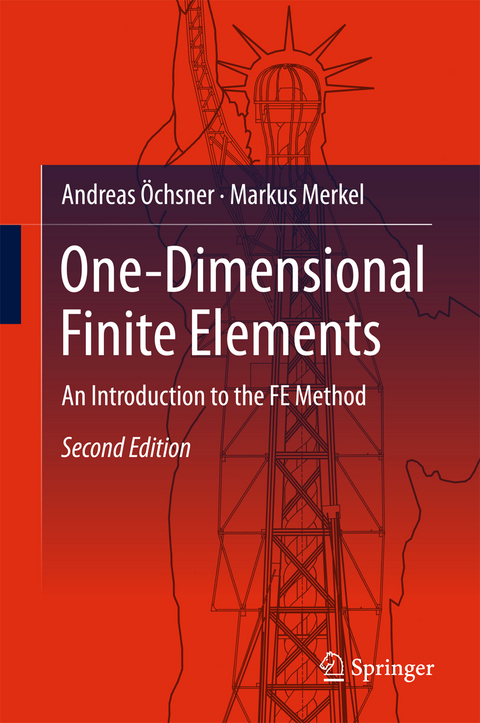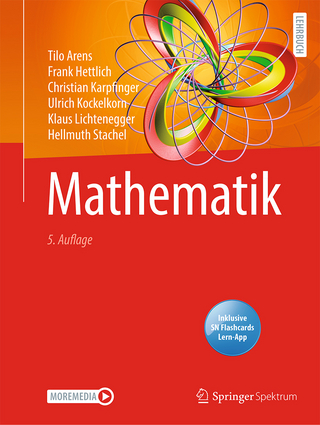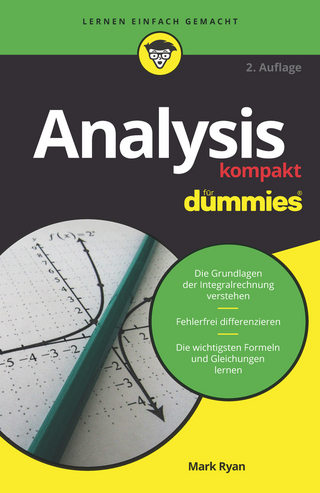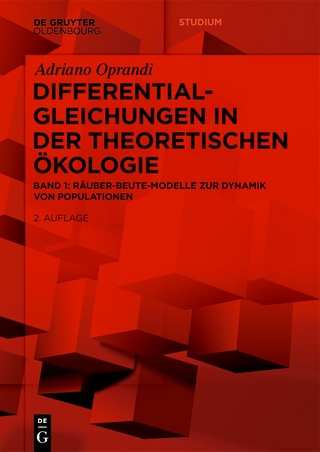
One-Dimensional Finite Elements
Springer International Publishing (Verlag)
978-3-319-75144-3 (ISBN)
This textbook presents finite element methods using exclusively one-dimensional elements. It presents the complex methodology in an easily understandable but mathematically correct fashion. The approach of one-dimensional elements enables the reader to focus on the understanding of the principles of basic and advanced mechanical problems. The reader will easily understand the assumptions and limitations of mechanical modeling as well as the underlying physics without struggling with complex mathematics. Although the description is easy, it remains scientifically correct.
The approach using only one-dimensional elements covers not only standard problems but allows also for advanced topics such as plasticity or the mechanics of composite materials. Many examples illustrate the concepts and problems at the end of every chapter help to familiarize with the topics. Each chapter also includes a few exercise problems, with short answers provided at the end of the book.
The second edition appears with a complete revision of all figures. It also presents a complete new chapter special elements and added the thermal conduction into the analysis of rod elements. The principle of virtual work has also been introduced for the derivation of the finite-element principal equation.
Andreas Öchsner, born 1970, is Full Professor in the Department Solid Mechanics and Design at the University of Technology Malaysia (UTM), Malaysia and Head of the Advanced Materials and Structure Lab. Having obtained a Diploma Degree (Dipl.-Ing.) in Aeronautical Engineering at the University of Stuttgart (1997), Germany, he spent the time from 1997-2003 at the University of Erlangen-Nuremberg as a research and teaching assistant to obtain his Doctor of Engineering Sciences (Dr.-Ing.). From 2003-2006, he worked as Assistant Professor in the Department of Mechanical Engineering and Head of the Cellular Metals Group affiliated with the University of Aveiro, Portugal. His research interests are related to experimental and computational mechanics, cellular metals and thin structures and interphases. He has published over 290 scientific publications, comprising 11 research monographs, 13 book chapters and one teaching book on finite element methods. He is the general chairman of six international conferences on computational and experimental engineering (ACE-X series) and eight international conferences in the area of heat and mass transfer (DSL series). His editorial work comprises posts as Editor-in-chief of the international journal Continuum Mechanics and Thermodynamics (Springer), Editor-in-chief of the Springer book series on Advanced Structured Materials and Editor of SpringerBriefs in Applied Sciences and Technology: Computational Mechanics. His research activities were recognised in 2010 by the award of a higher doctorate degree (D.Sc.) by the University of Newcastle, Australia.
Motivation for the Finite Element Method.- Bar Element.- Torsion bar.- Bending Element.- General 1D Element.- Plane and Spatial Frame Structures.- Beam with Shear Contribution.- Beams of Composite Materials.- Nonlinear Elasticity.- Plasticity.- Stability (Buckling).- Dynamics.- Special Elements.
| Erscheinungsdatum | 30.05.2018 |
|---|---|
| Zusatzinfo | XXIII, 418 p. |
| Verlagsort | Cham |
| Sprache | englisch |
| Maße | 155 x 235 mm |
| Gewicht | 824 g |
| Themenwelt | Mathematik / Informatik ► Mathematik ► Analysis |
| Technik ► Maschinenbau | |
| Schlagworte | Backward-Euler algorithm • Bending Plasticity • composite materials • FEM textbook • Finite Elements Method FEM • nonlinear elasticity • Shear Forces • Structural Mechanics • Timoshenko Beams • Torsion |
| ISBN-10 | 3-319-75144-1 / 3319751441 |
| ISBN-13 | 978-3-319-75144-3 / 9783319751443 |
| Zustand | Neuware |
| Informationen gemäß Produktsicherheitsverordnung (GPSR) | |
| Haben Sie eine Frage zum Produkt? |
aus dem Bereich


